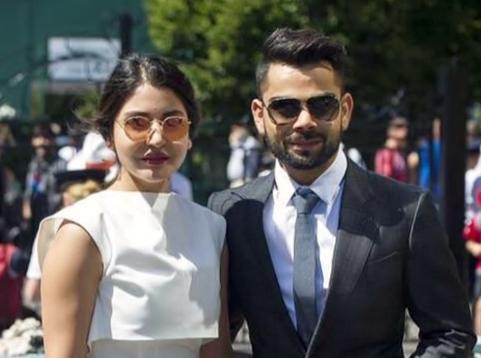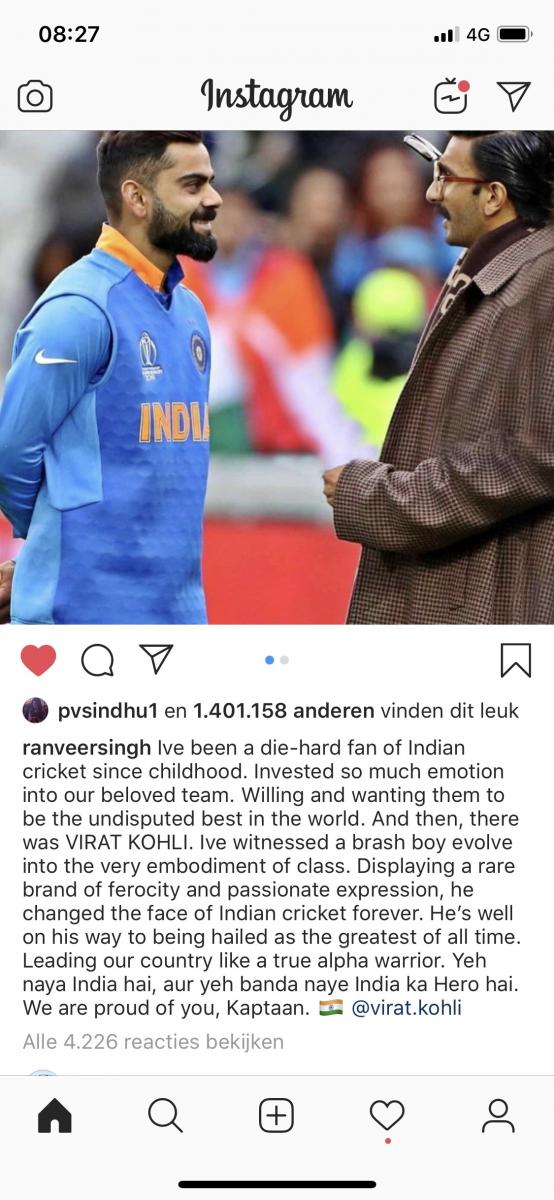
Interested in globalization? Watch cricket
A closer look at the traction of the Cricket World Cup 2019
One evening recently, I found myself in my local Antwerp night shop along with three other people: the Indian owner, a man from Pakistan and one from Sri Lanka. In a matter of seconds, I got involved in an intense discussion on the 2019 Cricket World Cup - which had just started - and the upcoming 'supergame' opposing India and Pakistan on 16 June.
Cricket: the sport of a globalized diaspora
Cricket had previously been a topic of conversation. Wherever I go in my neighborhood during the months of April and May, people from the Indian subcontinent (and there are quite a few), would be glued to the screens of smartphones or tablets at night, watching the Indian Premier League games and expressing strong opinions about them. They can do so due to a range of specifically designed livestreaming apps as well as through the apps of betting companies and, in some places, satellite TV stations, and they do so throughout the worldwide diaspora. Cricket has become the sport of a globalized diaspora, and has done so in quite a remarkable way.
For, while sports such as soccer can be said to be genuinely global, cricket remains the sport of the British post-empire. This can be established, quite simply, by comparing the teams competing in the 2019 Cricket World Cup with those competing in the finals round of the FIFA Women's World Cup 2019 (held simultaneously). In the Cricket World Cup, England, Australia, Bangladesh, India, New Zealand, Pakistan, South Africa, Sri Lanka, Afghanistan and the West Indies (aka the Caribbean) battle it out. As for the FIFA Women's World Cup, the 24 teams in the competition include 9 European ones, 6 teams from the Asia-Pacific region, 3 African teams, and 6 teams from the Americas. Both cricket and soccer have their roots in Britain, but while the former spread from Britain to its former colonies and dominions, the latter spread globally.
Both cricket and soccer have their roots in Britain, but while the former spread from Britain to its former colonies and dominions, the latter spread globally.
The scale of soccer is, therefore, truly impressive. The 2018 FIFA World Cup was reportedly viewed by over 3,5 billion people, with the cup final (opposing France and Croatia) attracting over one billion viewers in itself. The superstars of soccer are also by far the biggest sports celebrities on social media such as Instagram (Cristiano Ronaldo leading the pack with over 171 million followers, about 50 million more than Lionel Messi), and iconic soccer teams such as Real Madrid and Barcelona proudly count more than 70 million Instagram followers.
But look at some figures for cricket. This year's Indian Premier League competition reportedly drew 345 million viewers. The 2015 Cricket World Cup was viewed by 2.2 billion people and the most widely watched game in that event was the clash between India and Pakistan, which attracted a TV audience of over one billion. Both records are certain to be broken this year - we get an idea of that when we learn that there were about 700,000 requests for tickets for the game, played in a stadium with a capacity of just over 20,000. If such figures tell us anything, it is that games such as these are simply huge in the strange world of international sports events. And of course, given the restricted scope of cricket worldwide, such figures are truly baffling.
Virat Kohli and Bollywood
I got to know about Virat Kohli through conversations about cricket in my local night shop. Kohli is the captain of the Indian team in the World Cup, and an athlete holding several records in the game - a cricket superstar equal to soccer's Cristiano Ronaldo or Messi, one can say. Kohli's Instagram account has no less than 35 million followers. This puts him 61st in the list of Instagram's most followed accounts, just after Lady Gaga but above one of soccer's most flamboyant stars, Paul Pogba. Kohli also attracts roughly 50,000 new followers per day - a million per month, let's say - and his impact level, according to Instagram metrics, is very high.
Indian cricket stars such as Virat Kohli are deeply connected to that other Indian megaphenomenon in the field of popular culture: Bollywood.
One of the reasons for that is that Indian cricket stars such as Virat Kohli are deeply connected to that other Indian megaphenomenon in the field of popular culture: Bollywood. One can take this literally, since Kohli is married to the Bollywood icon Anushka Sharma, one of India's best-paid moviestars. Together they form one of India's most dashing celebrity couples, as well as an alliance offering extraordinarily brand value when it comes to marketing and advertisement revenue.

Virat Kohli and Anushka Sharma at Wimbledon
Cricket and Bollywood, thus, form a close synergy in shaping the pantheon of mass and social media celebrity culture in India as well as in the diaspora. Updates on social media by members of either one segment are likely to be endorsed by members of the other, and top members of both segments have similarly impressive numbers of Instagram followers (with actress Priyanka Chopra towering over the list with over 41 million followers). It is no surprise, then, that the epic victory of India's cricket team over that of Pakistan on 16 June 2019 triggered enthusiastic responses from within the Bollywood community.
By way of illustration: in this Instagram update of 17 June, we see the celebrated Bollywood actor Ranveer Singh (in the picture with Virat Kohli) pouring praise onto the Indian team and its hero-captain. Observe also that among those who liked the update, P.V. Sindhu is mentioned - a female Indian badminton Olympic medalist and style advertisement icon. The fact that this media synergy of actors and athletes now reaches enormous audiences in and beyond India turns tense fixtures such as the India-Pakistan one into mega-events and, by extension, into tremendously profitable advertisement opportunities.

Ranveer Singh on Team India, Instagram update 17 June 2019
Indian popular culture, including cricket, currently reaches unprecedented audiences across the globe because it is carried around by a hybrid media system.
When we look at Instagram profiles such as those of Virat Kholi or Priyanka Chopra, we notice a very steep increase in the number of followers. Chopra, for instance, doubled the size of her cohort in about one year, and Kohli's account also boomed. There appears to be a veritable stampede towards Instagram in India these days, creating huge levels of exposure for those who lead the pack. If Indian popular culture, including cricket, currently reaches unprecedented audiences across the globe, it is because it is now carried around by a hybrid media system in which several media platforms and formats co-occur and interact, drawing in media actors from a variety of directions and sites, previously often operating in relative autonomy. The spectacular rise of Instagram exposure of popular-cultural celebrities now adds to the impact of traditional mass media, sattelite connections and livestreaming apps, providing a tremendously powerful broadcasting-and-uptake infrastructure for, among other things, the Cricket World Cup. And audience involvement in such events quickly finds its way to social media, as this short YouTube clip illustrates.
Segmented globalization
So we see that the media traction of the Cricket World Cup is gigantic, in spite of the fact that the global spread of cricket as a sport is restricted to the British post-empire. While cricket gets nowhere near the scope of soccer (or even badminton) in terms of practicing athletes worldwide, its global exposure and popularity far transcends its relatively restricted practicing population. It is an effectively globalized sports - it is even one of the most impressively globalized ones.
The India-Pakistan game of 16 June 2019 took well over 9 hours, and I am not including the pause due to a late afternoon rainshower, which eventually led to a shortened game of 40 instead of 50 overs. Cricket remains hard to endure for someone who grew up in a culture in which sports broadcasts would consume a couple of hours, as in soccer, or about three to four hours such as with Tour de France cycling stages. The fact is that hundreds of millions of people do; and if these people live in New Zealand or California, they will stay up all night for it - the Cricket World Cup is played in England and Wales this year.
Narrowly based cultural practices can now be effectively spread over vast and dispersed audiences, without necessarily involving a broadening of their 'production' base.
This illustrates a few elementary insights into the nature and structure of cultural globalization. First, it shows us that globalization processes are often segmented. That means that, even if a particular phenomenon is narrow in the sense of primary participation - like cricket being confined to the British post-empire - it can still be effectively global in terms of secondary participation - in finding audiences and uptake. A lot of this can be seen nowadays - think, for instance, of the increasing global popularity of Korean-originated K-pop, or that of Japan-based otaku. Narrowly based cultural practices can now be effectively spread over vast and dispersed audiences, without necessarily involving a broadening of their 'production' base, so to speak. Cricket is a case in point, and as a form of segmented globalization it can be contrasted to soccer, which would (like Coca-Cola and blue jeans) be more generally globalized.
Secondly, we can see how such segmented forms of globalization get their traction from an intensified and more diversified media environment, the hybrid media system mentioned earlier. Audiences are created and nourished through the interplay of various different media platforms and instruments. It is through the hybridization of the media system that we see how the relatively narrowly based cultural practices mentioned here carve their routes towards - often ephemeral - publics across the world, and manage to maintain a loyal (even sometimes fanatic) cohort of followers. Cricket, once more, can serve as a prime example for this - the smartphones and tablets in my Antwerp neighborhood, livestreaming the World Cup games and leading to endless discussions and reflections, testify to that.